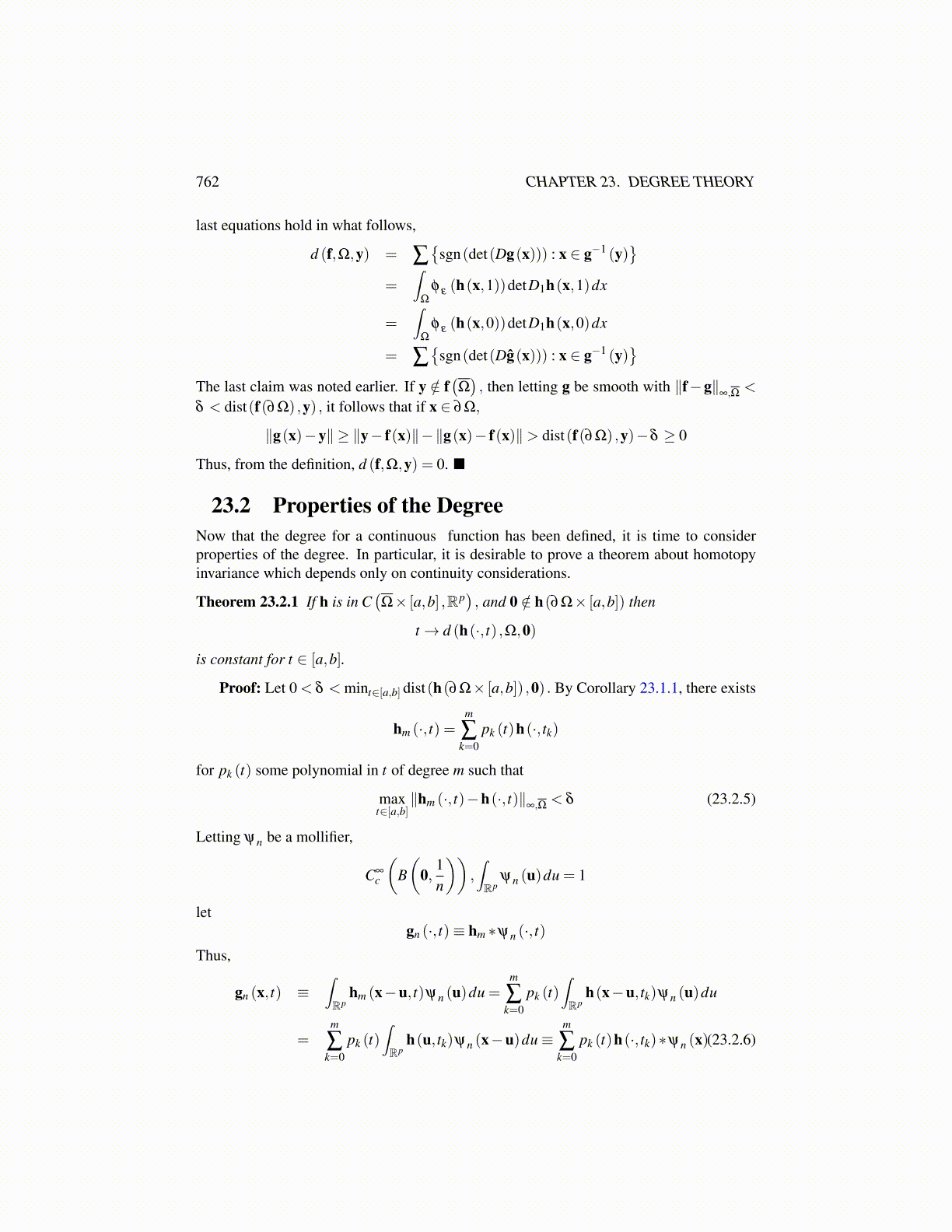
762 CHAPTER 23. DEGREE THEORY
last equations hold in what follows,
d (f,Ω,y) = ∑{
sgn(det(Dg(x))) : x ∈ g−1 (y)}
=∫
Ω
φ ε (h(x,1))detD1h(x,1)dx
=∫
Ω
φ ε (h(x,0))detD1h(x,0)dx
= ∑{
sgn(det(Dĝ(x))) : x ∈ g−1 (y)}
The last claim was noted earlier. If y /∈ f(Ω), then letting g be smooth with ∥f−g∥
∞,Ω <
δ < dist(f(∂Ω) ,y) , it follows that if x ∈ ∂Ω,
∥g(x)−y∥ ≥ ∥y− f(x)∥−∥g(x)− f(x)∥> dist(f(∂Ω) ,y)−δ ≥ 0
Thus, from the definition, d (f,Ω,y) = 0.
23.2 Properties of the DegreeNow that the degree for a continuous function has been defined, it is time to considerproperties of the degree. In particular, it is desirable to prove a theorem about homotopyinvariance which depends only on continuity considerations.
Theorem 23.2.1 If h is in C(Ω× [a,b] ,Rp
), and 0 /∈ h(∂Ω× [a,b]) then
t→ d (h(·, t) ,Ω,0)
is constant for t ∈ [a,b].
Proof: Let 0 < δ < mint∈[a,b] dist(h(∂Ω× [a,b]) ,0) . By Corollary 23.1.1, there exists
hm (·, t) =m
∑k=0
pk (t)h(·, tk)
for pk (t) some polynomial in t of degree m such that
maxt∈[a,b]
∥hm (·, t)−h(·, t)∥∞,Ω < δ (23.2.5)
Letting ψn be a mollifier,
C∞c
(B(
0,1n
)),∫Rp
ψn (u)du = 1
letgn (·, t)≡ hm ∗ψn (·, t)
Thus,
gn (x, t) ≡∫Rp
hm (x−u, t)ψn (u)du =m
∑k=0
pk (t)∫Rp
h(x−u, tk)ψn (u)du
=m
∑k=0
pk (t)∫Rp
h(u, tk)ψn (x−u)du≡m
∑k=0
pk (t)h(·, tk)∗ψn (x)(23.2.6)